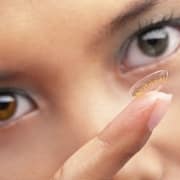What it Means When One Eye Sees Blurry and the Other Doesn’t
First off, it’s quite common for people to have different levels of vision in each eye. During your eye exam in Champaign, IL, your optometrist might discover the need for a different prescription in your right eye than your left. This is no cause for concern. But there’s a certain condition, known as monocular blurry vision, that can stem from minor issues to more serious health concerns. Only your eye doctor can diagnose this condition.
Possible Causes of Blurry Vision in One Eye
One common cause, which we mentioned just now, is simply either nearsightedness or farsightedness, where one eye’s prescription differs from the other. Don’t worry about that. Then there’s dry eye syndrome, and that can also lead to temporary blurriness in one eye.
Some eye infections can cause alarming and sudden blurred vision in one eye. Your optometrist can help with this. Then there’s cataracts, which slowly cloud the lens of the eye. You’ll be able to see this in the mirror. A detached retina can also cause sudden and abrupt blurry vision, in which case you should hop in the car right away—with someone else driving—to seek help.
When to Seek Immediate Help
If the blurriness comes on unexpectedly and suddenly, is accompanied by intense pain, headaches, dizziness or blindness, this often indicates a more serious issue, which requires immediate attention from a professional. Other concerning causes include glaucoma, which increases eye pressure and can damage vision, or diabetic retinopathy, a complication of diabetes affecting the retina.
If you notice persistent or sudden blurry vision in one eye, scheduling an eye exam is crucial. Your optometrist in Champaign, IL can diagnose the issue and recommend treatment, whether it’s updating a prescription, using eye drops, or addressing a more serious condition. Early intervention can help prevent worsening vision and protect long-term eye health.




